Some very nice folks in Brunswick had some bees in their house (see previous post). So the Cumberland County Beekeepers came to the rescue by turning it into a learning opportunity and holding a Bee Removal Workshop.
Master Beekeeper (and Maine State Beekeepers Assn. President) Erin MacGregor-Forbes agreed to lead a group through a live removal of honeybees from a building.
The rain held out, and we were in business.
These images will walk you through the process.
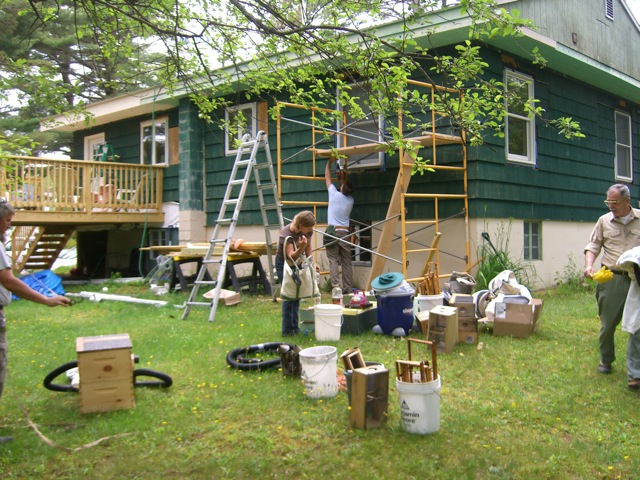
The homeowner set up scaffolding for the group to work (above) and the rest of us bought out the gear. It looked like a beekeepers yard sale.
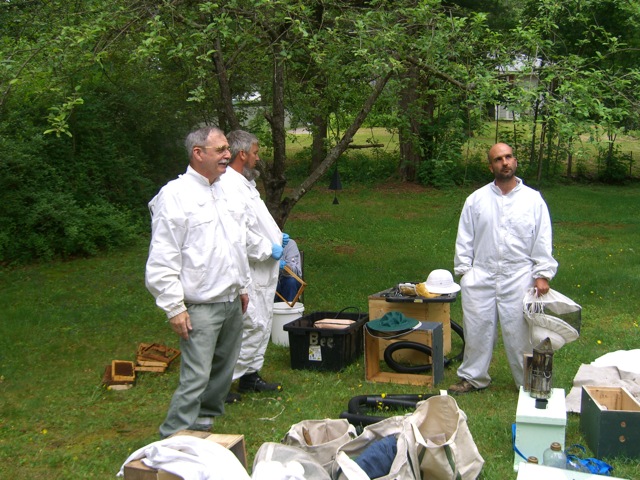
We had three different kinds of bee-vacs, lots of empty frames, buckets, nucs, tools – you name it.
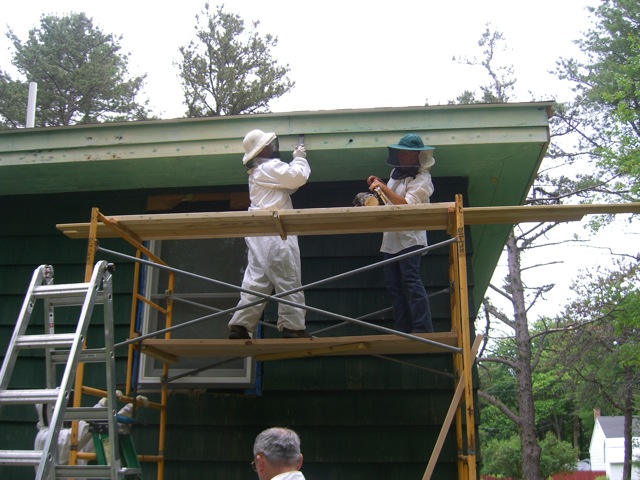
We got to work getting things opened up in a manner that would not destroy the house.
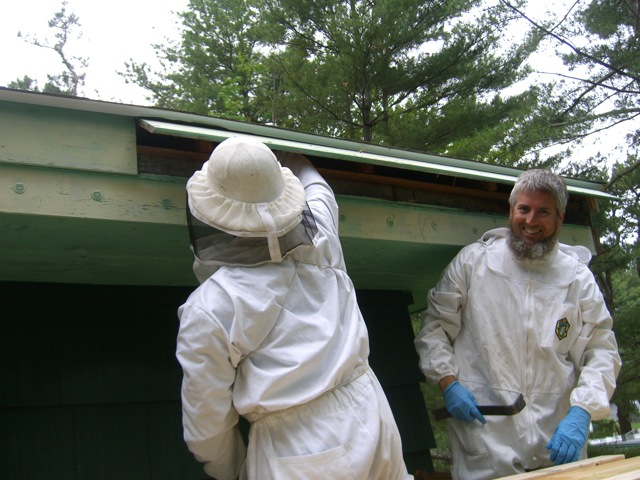
The house had originally had a flat roof, so there was some funkiness inside that had to be dealt with by the crew.
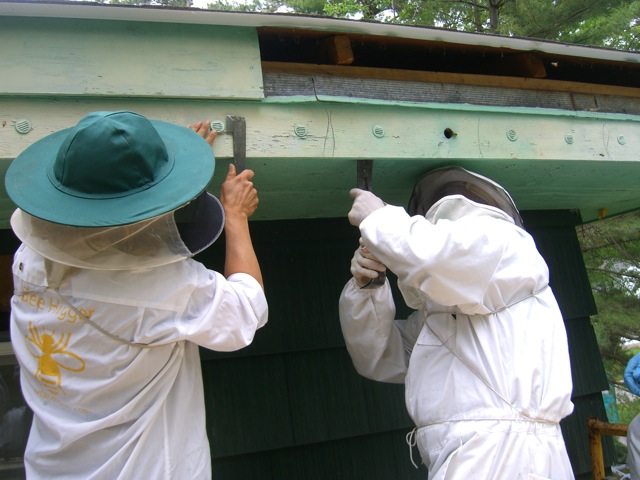
Opening up the house went pretty quickly.

So the crew got it opened up and was surprised to find only a couple of small combs and a couple of hundred bees.
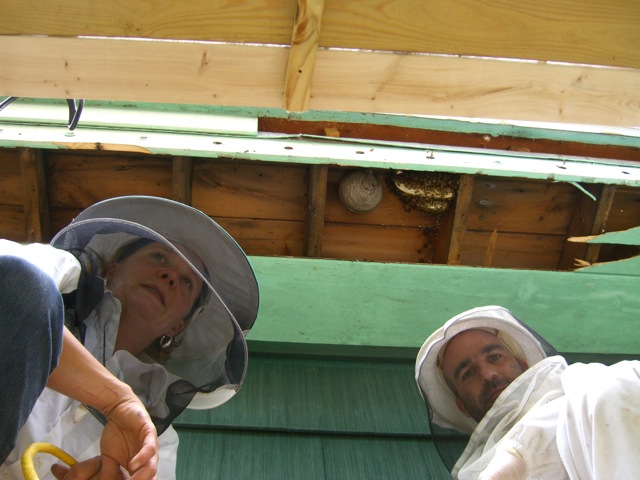
So here we were with a small colony and a Paper Wasp nest (inactive). It seemed as if the bees I had snagged a couple of weeks earlier were actually the bulk of the swarm, and that they had just arrived when I had come by to scoop them up. I had assumed that they had been there for a while, and were just coming out for some air on a very hot day. One of the reasons for this theory is that the homeowners had previously had honeybees in a similar cavity in the house. We had just figured that new bees had smelled the last occupants and had figured out that the cavity was perfect for them. The reality is probably that I had captured most of the swarm and these were the pioneers of the colony who were inside the house at the time.

So Erin and Chris got to vacuuming the bees out with a special bee-vac (note the smooth tube, so that the bees don’t get too clobbered on the way in).
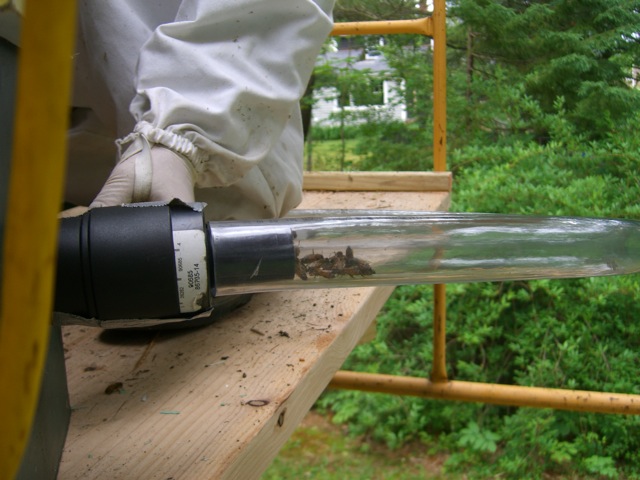
The vacuum is set up so that it doesn’t suck them in too hard and kill all the bees.

The comb is removed from the structure and loosely rubber banded into empty frames. All the while looking for the queen, brood and eggs. Only a small patch of eggs were found.

Joel borrowed a “bee suit” and helped with the process. I think he was very happy to have the bees out of his house.
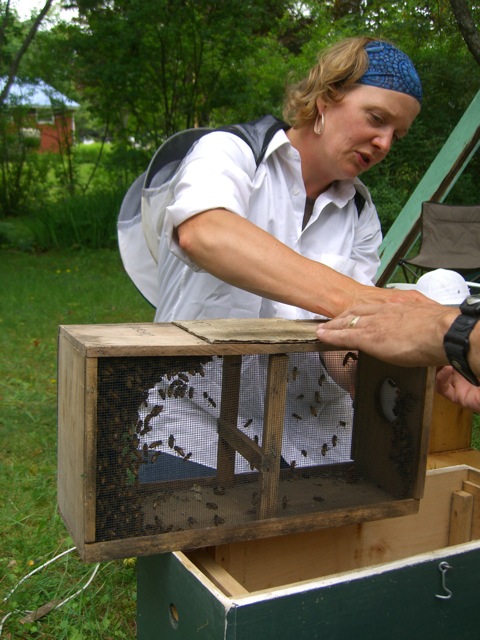
We used a very nifty contraption that sucked the bees into “cartridges” that were made of of the packages that bees come in (when you order them from down South) and was housed in a modified “nuc” box.
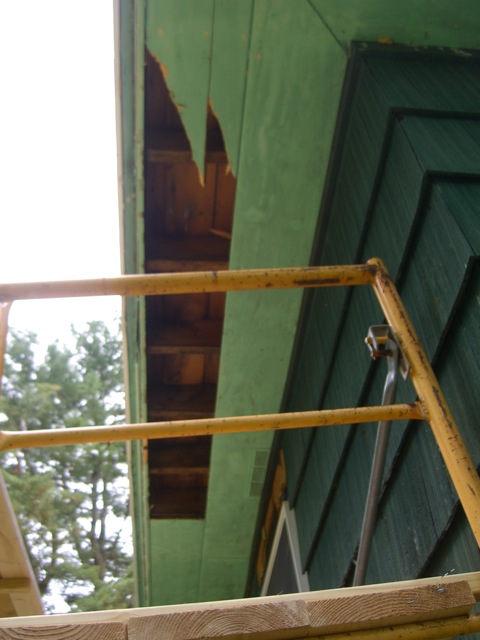
In conclusion, for me, even though it went very quickly and we didn’t have tons of bees to pull out of the structure it was a highly successful endeavor. We all learned the process and steps one goes through to prep and remove honeybees from a structure form an experienced bee-remover. We also got hands on training with the specialized equipment that is frequently used. From what I understand, the only thing missing was hordes of angry stinging bees. That is fine with me.
Many thanks to all who participated for a fine afternoon.
